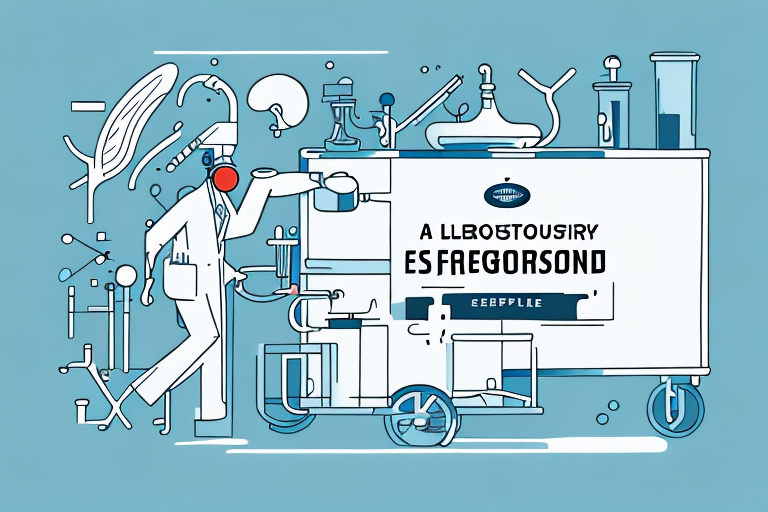Effective Laboratory Specimen Transport: Ensuring Accuracy and Safety
Effective laboratory specimen transport is a critical aspect of laboratory operations, playing a crucial role in ensuring the accuracy and validity of test results. Proper transportation protocols not only safeguard the integrity of samples but also enhance the reliability of diagnostic outcomes. In this article, we will explore the importance of proper laboratory specimen transportation and provide comprehensive guidelines on best practices for safe and efficient transport.
The Importance and Risks of Proper Specimen Transport
Maintaining Sample Integrity
Transporting laboratory specimens correctly is essential to maintain their integrity. According to the Centers for Disease Control and Prevention (CDC), improper handling can lead to sample degradation, affecting the accuracy of test results. For instance, delayed refrigeration of blood samples can cause hemolysis, rendering the sample unusable.
Preventing Disease Transmission
Proper transportation protocols help in preventing the transmission of infectious diseases. The World Health Organization (WHO) emphasizes the importance of secure transport methods to minimize the risk of contamination or accidental exposure to hazardous materials.
Ensuring Timely Delivery for Accurate Results
Timeliness in specimen transport is critical, especially for time-sensitive tests. Studies have shown that delays can significantly impact the outcomes of assays, leading to potential misdiagnoses and delayed treatments. Utilizing expedited shipping methods can enhance the reliability of test results by ensuring specimens reach the laboratory promptly.
Best Practices for Transporting Specimens
Handling Different Specimen Types
Different types of specimens require specific handling procedures to preserve their quality:
- Blood Samples: Must be transported in refrigeration to prevent hemolysis and clotting.
- Microbiological Samples: Require sterile packaging to avoid contamination.
- Chemical Materials: Should be handled as hazardous materials, with appropriate labeling and containment.
- Urine and Saliva Samples: Need leak-proof containers to prevent tampering and contamination.
- Tissue and Biopsy Samples: Must be kept at controlled temperatures to prevent degradation.
Choosing the Right Containers
Selecting appropriate transport containers is vital for maintaining specimen quality. Containers should be:
- Leak-proof and tamper-evident
- Insulated to maintain required temperatures
- Properly labeled for easy identification
- Compatible with the specimen type and transport mode
For detailed guidelines on container selection, refer to the American Conference of Governmental Industrial Hygienists (ACGIH) standards.
Preparation Tips and Tricks
Proper preparation of specimens includes:
- Accurate labeling with patient information, collection date, and time
- Using preservative-treated containers when necessary
- Ensuring samples are securely packaged to prevent spills
- Documenting all relevant information to aid in tracking and identification
Temperature Control During Transport
Maintaining the correct temperature is crucial for preserving specimen integrity. Temperature-sensitive specimens should be transported using thermal-insulating materials such as dry ice, gel packs, or insulated coolers. The ISO 15189 standard outlines specific temperature requirements for various types of specimens.
Additionally, implementing temperature monitoring devices can provide real-time data to ensure specimens remain within the desired temperature range throughout transit.
Labeling and Tracking Specimens
Proper labeling and tracking systems are essential for the safe and efficient transportation of laboratory specimens:
- Labeling: Each specimen should be clearly labeled with patient details, specimen type, and any special handling instructions.
- Tracking: Utilize barcoding or RFID technology to monitor the location and status of specimens in real-time. Systems like ABB’s RFID solutions can enhance traceability and reduce the risk of sample loss.
Implementing robust tracking systems helps in quickly identifying any issues during transport and ensures accountability at each stage.
Compliance with Regulatory Requirements
Laboratories must adhere to various local, state, and federal regulations governing specimen transport. Compliance ensures the safety of personnel and the public, and helps avoid legal repercussions:
- Regulatory Bodies: Familiarize yourself with guidelines from organizations such as the U.S. Department of Transportation (DOT) and the Food and Drug Administration (FDA).
- Documentation: Maintain accurate records of specimen handling, transport conditions, and chain of custody.
- Training: Ensure that all personnel involved in specimen transport are adequately trained in compliance protocols.
Adhering to standards like ISO 15189 can provide a framework for meeting regulatory requirements.
Role of Technology in Specimen Transport
Advancements in technology have significantly improved the safety and efficiency of laboratory specimen transport:
- Tracking Systems: RFID and barcode systems enable real-time tracking and reduce the likelihood of specimen misplacement.
- Temperature Monitoring: IoT-enabled devices can continuously monitor and report temperature fluctuations during transport.
- Laboratory Information Systems (LIS): Integrate with transport systems to automate data entry and tracking, reducing manual errors.
Implementing these technologies can streamline the transport process, enhance traceability, and ensure compliance with safety standards.
Troubleshooting and Emergency Procedures
Common Issues and Solutions
- Delayed Delivery: Coordinate with carriers to expedite shipping and utilize real-time tracking to anticipate delays. Contingency plans should include alternative transport methods.
- Container Leakage: Use double-sealed containers and conduct inspections before transport to prevent leaks. In case of leakage, follow biohazard safety protocols immediately.
- Inappropriate Transportation Methods: Assess the specific requirements of each specimen type and choose the appropriate transportation mode, whether ground, air, or specialized courier services.
- Regulatory Non-Compliance: Regularly review and update transport protocols to align with current regulations, and conduct periodic training for staff.
Emergency Response Plan
In the event of a transportation emergency, such as severe delays or accidents, having a well-defined contingency plan is essential:
- Immediate Notification: Inform all relevant stakeholders, including laboratory personnel and healthcare providers, about the issue.
- Sample Isolation: Secure affected specimens to prevent contamination or further degradation.
- Assessment and Action: Determine the extent of the issue and take corrective measures, such as rerouting transport or utilizing backup samples if available.
- Documentation and Review: Record the incident details and analyze the response to improve future transport protocols.
Conclusion
Proper laboratory specimen transportation is paramount to ensuring the accuracy and reliability of diagnostic testing. By adhering to best practices—such as maintaining temperature control, accurate labeling, and compliance with regulatory standards—laboratories can minimize risks associated with specimen transport. Incorporating advanced technologies further enhances the efficiency and safety of the transport process. Ultimately, meticulous specimen transportation protocols contribute to better patient outcomes by delivering precise and timely laboratory results.




















